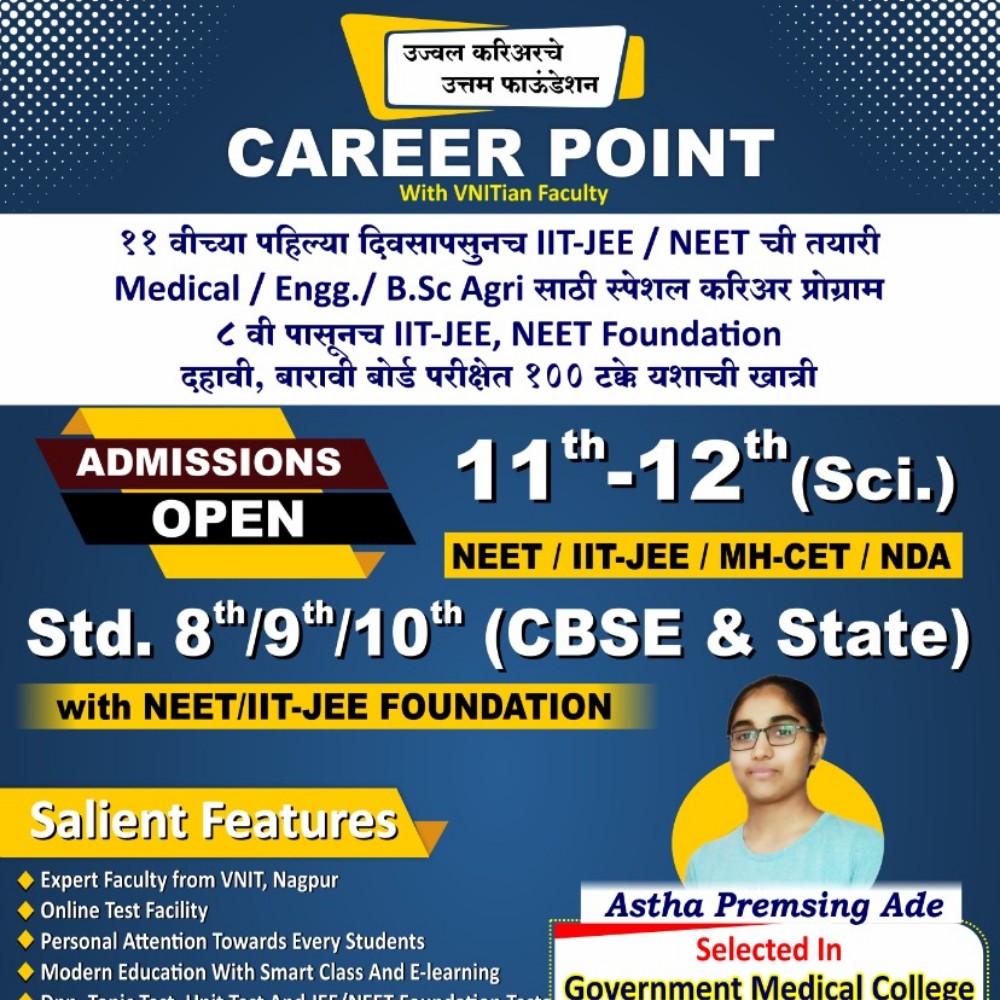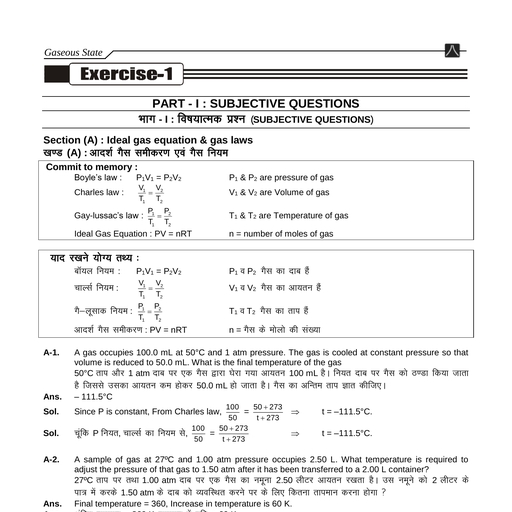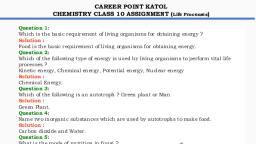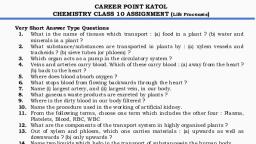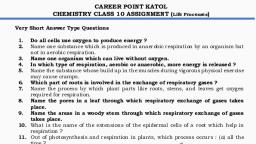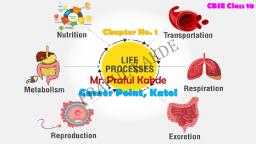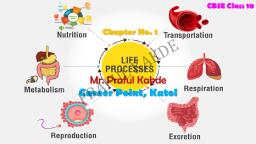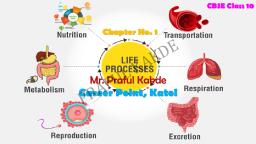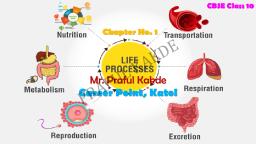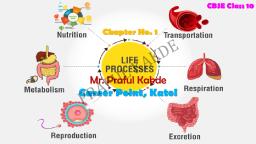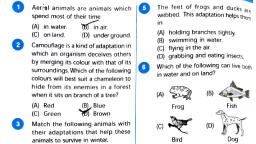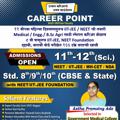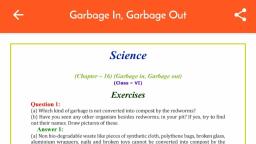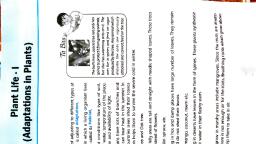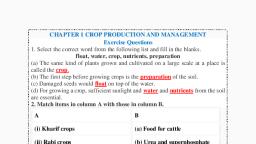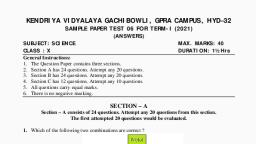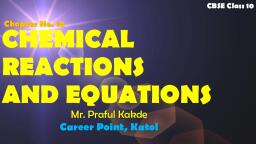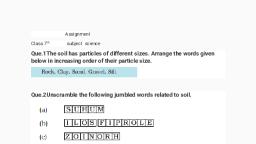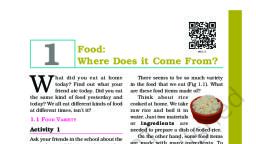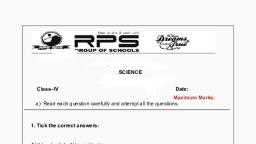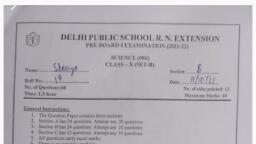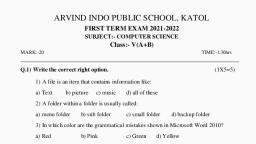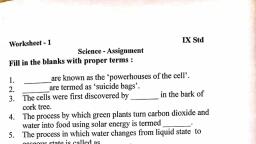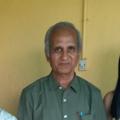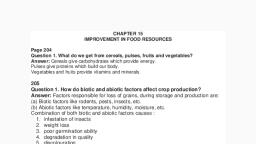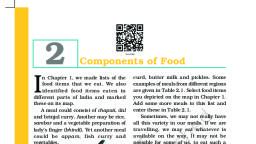Page 1 :
CAREER POINT KATOL, CHEMISTRY CLASS 10 ASSIGNMENT (Life Processes), Very Short Answer Type Questions, 1., 2., 3., 4., 5., 6., 7., 8., 9., 10., 11., 12., 13., 14., 15., 16., 17., 18., 19., 20., 21., 22., 23., 24., 25., , Which is the basic requirement of living organisms for obtaining energy, ?, Which of the following type of energy is used by living organisms to, perform vital life processes ? Kinetic energy, Chemical energy, Potential, energy, Nuclear energy, Which of the following is an autotroph ? Green plant or Man, Name two inorganic substances which are used by autotrophs to make, food., What is the mode of nutrition in fungi ?, Name one organism each having saprophytic, parasitic and holozoic, modes of nutrition., Name the process by which plants make food., In addition to carbon dioxide and water, state two other conditions, necessary for the process of photosynthesis to take place., Apart from sunlight and chlorophyll, what other things are required to, make food by photosynthesis ?, (a) Name a gas used in photosynthesis. (b) Name a gas produced in, photosynthesis., The leaves of a plant first prepare food A by photosynthesis. Food A then, gets converted into food B. What are A and B ?, Which substance is used to remove chlorophyll from a green leaf during, photosynthesis experiments ?, Why do we boil the leaf in alcohol when we are testing it for starch ?, (a) Name the pigment in leaves which absorbs sunlight energy. (b) What, is the colour of this pigment ?, Name the pigment which can absorb solar energy., Name the organelle of plant cells in which photosynthesis occurs., Apart from carbon dioxide and water, name four other raw materials, which are needed by the plants., Where is chlorophyll mainly present in a plant ?, What is the name of those cells in the leaf of a plant which control the, opening and closing of stomata?, Name an animal whose process of obtaining food is called phagocytosis., All the animals can be divided into three groups on the basis of their, eating habits. Name the three groups., What is the scientific name of the animals which are : (i) only meat eaters, ? (ii) only plant eaters ? (iii) both, plant and meat eaters ?, Name the green pigment present in the leaves of a plant., Arrange the following processes involved in the nutrition in animals in, the correct order (in which they take place) : Assimilation, Egestion,, Ingestion, Absorption, Digestion, How does Amoeba engulf the food particle ?, , 1 | Life Processes, , E, D, K, A, , U, F, A, R, P, , K, L, , Career Point Katol
Page 2 :
CAREER POINT KATOL, CHEMISTRY CLASS 10 ASSIGNMENT (Life Processes), 26. What substances enter into the food vacuole in Amoeba to break down, the food ?, 27. From which part of the body, undigested food is egested in Amoeba ?, 28. Name a unicellular animal which uses cilia to move food particles into its, mouth., 29. Name the enzyme present in human saliva. What type of food material is, digested by this enzyme ?, 30. Which of the organs perform the following functions in humans ?, (a) Absorption of food, (b) Absorption of water, 31. What moves the food in the digestive organs ?, 32. What is the other name of food pipe ?, 33. What substance is mixed with food in the mouth during chewing by the, teeth ?, 34. What is the name of tiny projections on the inner surface of small, intestine which help in absorbing the digested food ?, 35. In which part of the digestive system is water absorbed ?, 36. What is the name of the opening in the human body through which, undigested food is thrown out ?, 37. Where is digested food absorbed into blood in human body ?, 38. Name the biological catalysts which bring about chemical digestion of, food., 39. Fill in the following blanks with suitable words :, (a) All green plants are………………, (b) All non-green plants and animals are ………….., (c) Heterotrophs depend on………….and other………………. for food., (d) Green plants use………….,…………….and……………to make food., (e) Iodine turns blue-black on reacting with……………………, Short Answer Type Questions, 40. (a) What is chlorophyll ? What part does chlorophyll play in, photosynthesis ?, (b)(i) Which simple food is prepared first in the process of photosynthesis, ? (ii) Name the food which gets stored in plant leaves., 41. (a) What criteria can be used to decide whether something is alive ?, (b) What is meant by life processes ? Name the basic life processes, common to all living organisms which are essential for maintaining life., 42. (a) What are autotrophs ? Give one example of autotrophs. (b) What are, the conditions necessary for autotrophic nutrition ?, 43. (a) What are heterotrophs ? Give one example of heterotrophs. (b) What, is the difference between autotrophic nutrition and heterotrophic, nutrition ?, 44. (a) Define a nutrient. Name four important nutrients present in our food., (b) What are the various types of heterotrophic nutrition ?, , E, D, K, A, , K, L, , U, F, A, R, P, , 2 | Life Processes, , Career Point Katol
Page 3 :
CAREER POINT KATOL, CHEMISTRY CLASS 10 ASSIGNMENT (Life Processes), 45. (a) Photosynthesis converts energy X into energy Y. What are X and Y ?, (b) State the various steps involved in the process of photosynthesis., 46. (a) How do plants obtain food ? (b) Why do plants need nitrogen ? How do, plants obtain nitrogen ?, 47. Define (i) saprophytic nutrition (ii) parasitic nutrition, and (iii) holozoic, nutrition. Give one example of each type., 48. Define (i) saprophyte, and (ii) parasite. Name two saprophytes and two, parasites., 49. (a) How does carbon dioxide from the air enter the leaves of a plant to be, used in photosynthesis ? (b) How does water from the soil reach the leaves, of a plant to be used in photosynthesis ?, 50. What substances are contained in gastric juice ? What are their functions, ?, 51. What substances are contained in pancreatic juice ? What are their, functions ?, 52. (a) What is the role of hydrochloric acid in our stomach ? (b) What is the, function of enzymes in the human digestive system ?, 53. (a) Which part of the body secretes bile ? Where is bile stored ? What is, the function of bile ? (b) What is trypsin ? What is its function ?, 54. What are the functions of liver and pancreas in the human digestive, system ?, 55. Match the organisms given in column Column I with the processes given, in column II :, Column I, Column II, (i) Leech, (a) Holozoic nutrition, (ii) Amoeba, (b) Autotrophic nutrition, (iii) Mushroom, (c) Parasitic nutrition, (iv) Green plant, (d) Saprophytic nutrition, 56. Name the following :, (a) The process in plants which converts light energy into chemical, energy., (b) Organisms that cannot prepare their own food., (c) Organisms that can prepare their own food., (d) The cell organelle where photosynthesis occurs., (e) The cells which surround a stomatal pore., (f) An enzyme secreted by gastric glands in stomach which acts on, proteins., 57. Match the terms in column I with those in column II :, Column I, Column II, (i) Trypsin, (a) Liver, (ii) Amylase, (b) Gastric glands, (iii) Bile, (c) Pancreas, (iv) Pepsin, (d) Saliva, 58. (a) What is common for Cuscuta, ticks and leeches ?, , E, D, K, A, , K, L, , U, F, A, R, P, , 3 | Life Processes, , Career Point Katol
Page 4 :
CAREER POINT KATOL, CHEMISTRY CLASS 10 ASSIGNMENT (Life Processes), , 59., 60., , 61., , 62., , (b) Name the substances on which the following enzymes act in the, human digestive system :, (i) Trypsin, (ii) Amylase, (iii) Pepsin, (iv) Lipase, (c) Why does absorption of digested food occur mainly in the small, intestine ?, (a) Why is small intestine in herbivores longer than in carnivores ?, (b) What will happen if mucus is not secreted by the gastric glands ?, (c) What causes movement of food inside the alimentary canal ?, (a) How do guard cells regulate opening and closing of stomatal pores ?, (b) Two similar green plants are kept separately in oxygen free containers,, one in dark and the other in continuous light. Which one will live longer, ? Give reasons., (a) What would happen if all the green plants disappear from the earth ?, (b) If a plant is releasing carbon dioxide and taking in oxygen during the, day, does it mean that there is no photosynthesis occurring ? Justify your, answer., (a) Leaves of a healthy potted plant were coated with vaseline. Will this, plant remain healthy for long ? Give reason for your answer., (b) What will happen to the rate of photosynthesis in a plant under the, following circumstances ?, (i) cloudy day in morning but bright sunshine in the afternoon, (ii) no rainfall in the area for a considerable time., (iii) gathering of dust on the leaves, , E, D, K, A, , U, F, A, R, P, , K, L, , Long Answer Type Questions, 63. (a) What is photosynthesis ? (b) Write a chemical equation to show the, process of photosynthesis in plants. (c) Explain the mechanism of, photosynthesis., 64. (a) Name the raw materials required for photosynthesis. How do plants, obtain these raw materials ? (b) What are the various conditions, necessary for photosynthesis ? (c) Name the various factors which affect, the rate of photosynthesis in plants., 65. (a) Define nutrition. Why is nutrition necessary for an organism ? (b), What are the different modes of nutrition ? Explain with one example of, each mode of nutrition. (c) Name the mode of nutrition in (i) roundworm,, and (ii) Plasmodium., 66. (a) What are herbivores, carnivores and omnivores ? Give two examples, of each. (b) Classify the following into herbivores, carnivores and, omnivores : Lion, Man, Dog, Goat, Crow, Elephant, Snake, Hawk, Rabbit,, Deer (c) Name the five steps which occur in the process of nutrition in, animals., 4 | Life Processes, , Career Point Katol
Page 5 :
CAREER POINT KATOL, CHEMISTRY CLASS 10 ASSIGNMENT (Life Processes), 67. (a) Describe the process of nutrition in Amoeba. Draw labelled diagrams, to show the various steps in the nutrition in Amoeba. (b) What is the, mode of nutrition in Amoeba known as ? (c) What is the process of, obtaining food by Amoeba called ? What does it mean ?, 68. (a) Draw a labelled diagram of the human digestive system. With the help, of this diagram, describe the process of digestion of food in man, (humans). (b) Describe one way in which the small intestine is adapted, for the absorption of digested food. (c) What is the special name of the, contraction and expansion movement which pushes the food further in, our digestive tract (or alimentary canal) ?, 69. (a) Describe the parts of our tooth with the help of a labelled diagram. (b), What is meant by dental caries ? How are they caused ? (c) What is dental, plaque ? What harm can it do ? How can the formation of plaque be, prevented ?, 70. (a) Name the main organs of the human digestive system. Also name the, associated glands. (b) How do carbohydrates, fats and proteins get, digested in human beings ?, , E, D, K, A, , Multiple Choice Questions (MCQs), 71. Which of the following has the longest small intestine ?, (a) carnivore (b) omnivore (c) herbivore (d) autotroph, 72. The process of obtaining food by Amoeba is known as :, (a) dialysis (b) cytokinesis (c) phagocytosis (d) amoebiasis, 73. The organism having parasitic mode of nutrition is :, (a) Penicillium (b) Plasmodium (c) Paramecium (d) Parrot, 74. One of the following organisms has a saprophytic mode of nutrition. This, organism is :, (a) mushroom (b) malarial parasite (c) leech (d) lice, 75. The length of small intestine in a human adult is about :, (a) 4.5 m (b) 1.5 m (c) 3.5 m (d) 6.5 m, 76. The process of digestion of food in humans begins in :, (a) stomach (b) food pipe (c) mouth (d) small intestine, 77. The process of digestion in humans is completed in :, (a) oesophagus (b) small intestine (c) stomach (d) large intestine, 78. In human digestive system, bile is secreted by :, (a) pancreas (b) liver (c) kidneys (d) stomach, 79. Two of the following organisms have a holozoic mode of nutrition. These, organisms are :, (a) Paramecium and Plasmodium, (b) Plasmodium and Parakeet, (c) Parakeet and Paramecium, (d) Paramecium and Parasite, 80. The autotrophic mode of nutrition requires :, (a) carbon dioxide and water (b) chlorophyll (c) sunlight (d) all of the above, 81. The correct order of steps occurring in nutrition in animals is :, (a) Ingestion Absorption Digestion Assimilation Egestion, , K, L, , U, F, A, R, P, , 5 | Life Processes, , Career Point Katol
Page 6 :
CAREER POINT KATOL, CHEMISTRY CLASS 10 ASSIGNMENT (Life Processes), , 82., , 83., , 84., , 85., , 86., 87., 88., 89., 90., , 91., , (b) Ingestion Digestion Assimilation Absorption Egestion, (c) Ingestion Digestion Absorption Assimilation Egestion, (d) Ingestion Assimilation Digestion Absorption Egestion, In human digestive system, the enzymes pepsin and trypsin are secreted, respectively by :, (a) pancreas and liver, (b) stomach and salivary glands, (c) pancreas and gall bladder, (d) stomach and pancreas, When carrying out the starch test on a leaf, why is it important to boil, the leaf in alcohol ?, (a) to dissolve the waxy cuticle, (b) to make the cells more permeable to iodine solution, (c) to remove the chlorophyll, (d) to stop chemical reactions in the cells., Pancreatic juice contains enzymes which digest :, (a) proteins and carbohydrates only, (b) proteins and fats only, (c) fats and carbohydrates only, (d) proteins, fats and carbohydrates, Which of the following is the correct statement regarding bile ?, (a) secreted by bile duct and stored in liver, (b) secreted by gall bladder and stored in liver, (c) secreted by liver and stored in bile duct, (d) secreted by liver and stored in gall bladder, Where are proteins first digested in the alimentary canal ?, (a) small intestine (b) oesophagus (c) mouth (d) stomach, The inner lining of stomach is protected by one of the following from the, harmful effect of hydrochloric acid. This is :, (a) pepsin (b) mucus (c) saliva (d) bile, Which part of alimentary canal receives bile from the liver ?, (a) oesophagus (b) small intestine (c) stomach (d) large intestine, Which of the following component of our food is digested by an enzyme, which is present in saliva as well as in pancreatic juice ?, (a) proteins (b) fat (c) minerals (d) carbohydrate, If the saliva is lacking in salivary amylase, then which of the following, processes taking place in the buccal cavity will be affected ?, (a) proteins breaking down into amino acids, (b) starch breaking down into sugars, (c) fats breaking down into fatty acids and glycerol, (d) intestinal layer breaking down leading to ulcers, Which of the following are the correct functions of two components of, pancreatic juice trypsin and lipase ?, (a) trypsin digests proteins and lipase carbohydrates, (b) trypsin digests emulsified fats and lipase proteins, (c) trypsin digests starch and lipase fats, , 6 | Life Processes, , E, D, K, A, , U, F, A, R, P, , K, L, , Career Point Katol
Page 7 :
CAREER POINT KATOL, CHEMISTRY CLASS 10 ASSIGNMENT (Life Processes), (d) trypsin digests proteins and lipase emulsified fats, 92. The oxygen liberated during photosynthesis by green plants comes from, :, (a) glucose (b) water (c) carbon dioxide (d) chlorophyll, 93. Which of the following is an incorrect statement ?, (a) energy is essential for life processes, (b) organisms grow with time, (c) movement of molecules does not take place among cells, (d) organisms must repair and maintain their body, 94. The internal energy (cellular energy) reserve in autotrophs is :, (a) proteins (b) fatty acids (c) glycogen (d) starch, 95. Which of the following events does not occur in photosynthesis ?, (a) conversion of light energy into chemical energy, (b) reduction of carbon dioxide to carbohydrates, (c) oxidation of carbon to carbon dioxide, (d) absorption of light energy by chlorophyll, 96. The opening and closing of the stomatal pores depends upon :, (a) oxygen, (b) water in guard cells, (c) temperature (d) concentration of CO2 in stomata, 97. Most of the plants absorb nitrogen in one of the following forms. This is :, (a) proteins (b) nitrates and nitrites (c) urea (d) atmospheric nitrogen, 98. The first enzyme to mix with food in the digestive tract is :, (a) pepsin (b) cellulose (c) amylase (d) trypsin, 99. Which of the following is the correct statement ?, (a) heterotrophs synthesise their own food, (b) heterotrophs utilize solar energy for photosynthesis, (c) heterotrophs do not synthesise their own food, (d) heterotrophs are capable of converting carbon dioxide and water into, carbohydrates, 100. In which of the following groups of organisms the food material is broken, down outside the body and then absorbed ?, (a) Mushroom, Green plants, Amoeba, (b) Yeast, Mushroom, Bread mould, (c) Paramecium, Amoeba, Cuscuta, (d) Cuscuta, Lice, Tapeworm, 101. Which of the following is the correct sequence of parts as they occur in, the human alimentary canal ?, (a) Mouth Stomach Small intestine Oesophagus Large intestine, (b) Mouth Oesophagus Stomach Large intestine Small intestine, (c) Mouth Stomach Oesophagus Small intestine Large intestine, (d) Mouth Oesophagus Stomach Small intestine Large intestine, , E, D, K, A, , K, L, , U, F, A, R, P, , 7 | Life Processes, , Career Point Katol
Page 8 :
CAREER POINT KATOL, CHEMISTRY CLASS 10 ASSIGNMENT (Life Processes), Questions Based on High Order Thinking Skills (HOTS), 102. When a person eats sugary food, then organisms A present in his mouth, act on sugar to produce a substance B. The substance B first dissolves, the calcium salts from the top part C of the tooth and then from its, middle part D forming holes E. These holes ultimately reach the part F, in the lower part of tooth which contains nerves and blood vessels. The, substance B irritates the nerve endings inside the tooth causing, toothache., (a) What are (i) organisms A, and (ii) substance B ?, (b) What are (i) part C, and (ii) part D, of tooth known as ?, (c) By what name are the holes E in the tooth known ?, (d) Name the part F of the tooth., (e) What will happen if organisms A reach part F of the tooth ?, 103. If the teeth are not cleaned regularly, they become covered with a sticky, yellowish layer W of food particles and bacteria. Since layer W covers the, teeth, the alkaline liquid X secreted by glands Y inside the mouth cannot, reach the teeth surface to neutralise the acid formed by the action of, organisms Z on sugary food, and hence tooth decay sets in., (a) What is W known as ?, (b) What is (i) X, and (ii) Y ?, (c) What are organisms Z ?, (d) State one way of removing layer W from the teeth., 104. When a person puts food in his mouth, then teeth cut it into small, pieces, chew and grind it. The glands A in the mouth secrete a substance, B which is mixed with the food by tongue. The substance B contains an, enzyme C which starts the digestion of food in the mouth. The slightly, digested food from the mouth goes down a tube D. The special type of, movements E in the walls of tube D push the food into stomach for, further digestion. The stomach wall secretes gastric juice containing, three substance F, G and H. One of the functions of F is to kill bacteria, which may enter the stomach with food. The substance G protects the, inside layer of stomach from the damaging effect of substance F whereas, substance H is an enzyme for digestion. The partially digested food then, enters into small intestine for further digestion., (a) What is (i) gland A (ii) substance B, and (iii) enzyme C ?, (b) Name the tube D., (c) What is the movement E known as ?, (d) What are (i) F (ii) G, and (iii) H ?, 105. The partially digested food coming from the stomach of a person enters, a long and narrow organ A in his body. The organ A receives the, secretions of two glands : liver and pancreas. Liver secretes a greenishyellow liquid B which is normally stored in the organ C. Pancreas, secretes pancreatic juice which contains three digestive enzymes D, E, and F. The intestinal juice completes the process of digestion of food., , E, D, K, A, , K, L, , U, F, A, R, P, , 8 | Life Processes, , Career Point Katol
Page 9 :
CAREER POINT KATOL, CHEMISTRY CLASS 10 ASSIGNMENT (Life Processes), The inner wall of organ A has millions of tiny finger-like projections G, which help in the rapid absorption of digested food into blood stream., The undigested part of food then passes into wider tube H which absorbs, most of the water from undigested food. The last part of tube H called I, stores this undigested food (or waste) for some time. The undigested food, is then passed out though opening J as faeces in the process known as, K., (a) Name the organ A., (b) Name (i) liquid B, and (ii) organ C., (c) What are the digestive enzymes D, E and F ?, (d) Name the projections G present on the inner wall of organ A., (e) Name (i) tube H (ii) part I (iii) opening J, and (iv) process K., 106. A unicellular animal P having no fixed shape ingests a food particle by, forming temporary finger-like projections Q. The food particle is engulfed, with a little surrounding water to form a temporary stomach R inside it., The chemicals S from surrounding cytoplasm enter into R and break, down food into small and soluble molecules by chemical reactions. The, digested food is absorbed directly into cytoplasm by the process T. The, undigested food is thrown out of the body by the rupture of a cell, organelle U in a process called V. (a) Name the unicellular animal P. (b), What are (i) Q, and (ii) R ? (c) Name (i) chemical S, and (ii) process T. (d), Name (i) organelle U, and (ii) process V., 107. There are four organisms A, B, C and D. The organism A eats only the, flesh of other animals as food. The organism B can eat grains, fruits and, vegetables as well as meat and fish. The organism C can make the food, itself from simple inorganic substances present in the environment by, utilising sunlight energy. On the other hand, organism D eats only, plants and their products as food., 108. (a) Which organism is (i) omnivore (ii) herbivore, and (ii) carnivore ?, 109. (b) Which organism is an autotroph ?, 110. (c) Which organism is/are heterotroph(s) ?, 111. (d) Which organism can be a producer ?, 112. (e) Which organism is/are consumer (s) ?, 113. (f) Give one example each of organisms which could be like (i) A (ii) B (iii), C, and (iv) D, 114. The organisms A, B and C can obtain their food in three different ways., Organism A derives its food from the body of another living organism, which is called its D, without killing it. The organism B takes in the solid, food by the process of ingestion, digests a part of this food and throws, out undigested food in the process called E. The organism C obtains its, food from dead and decaying plants., 115. (a) What is the mode of nutrition of (i) organism A (ii) organism B, and, (iii) organism C ?, 116. (b) What is the organism like D called ?, , E, D, K, A, , K, L, , U, F, A, R, P, , 9 | Life Processes, , Career Point Katol
Page 10 :
CAREER POINT KATOL, CHEMISTRY CLASS 10 ASSIGNMENT (Life Processes), 117. (c) Name the process E., 118. (d) Give one example each of organisms like (i) A (ii) B, and (ii) C., 119. (e) What is the general name of three modes of nutrition exhibited by, organisms A, B and C ?, 120. An organism A which cannot move from one place to another, makes a, simple food B from thesubstances C and D available in the environment., This food is made in the presence of a green coloured substance E, present in organs F in the presence of light energy in a process called G., Some of the simple food B also gets converted into a complex food H for, storage purposes. The food H gives a blue-black colour with dilute iodine, solution., (a) What is (i) organism A (ii) food B, and (iii) food H ?, (b) What are C and D ?, (c) Name (i) green coloured substance E, and (ii) organ F., (d) What is the process G ?, 121. X is a wild animal which eats only the flesh of other animals whereas Y, is a domestic animal which feeds mainly on green grass., (a) What are animals like X known as ?, (b) What are animals like Y known as ?, (c) Which animal, X or Y, has a longer small intestine ? Why ?, (d) Name one animal which is like X., (e) Name one animal which is like Y., , E, D, K, A, , K, L, , U, F, A, R, P, , 10 | Life Processes, , Career Point Katol
